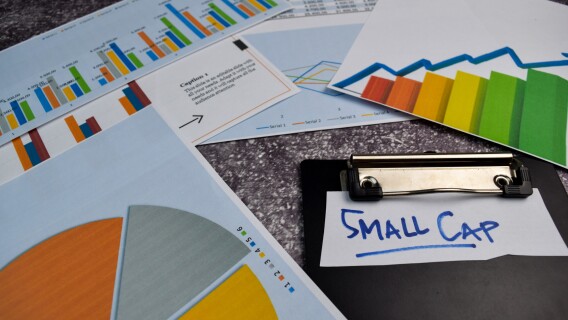Seeing futures tanking shortly after the market closed last Wednesday, I thought there must be something wrong with my data feed.
Everybody knew the Trump administration was going to announce tariffs. Many even thought they’d be harsher than the market expected.
After all, a guy like Trump doesn’t build up “Liberation Day” and then underdeliver.
Fast forward two trading sessions and, well, we all know what happened.
One of my thoughts last Friday was, hey, there’s a chance small caps will be more resilient than large caps here, if this crazy bet actually works out. After all, they have way more domestic exposure than large caps, so a pro-U.S. trade policy could be good.
[text_ad]
The small-cap index isn’t dominated by mega-cap tech stocks, at least one of which, ahem, Apple (APPL), has gotten smoked due to its reliance on heavily tariffed countries in Asia.
In contrast to the S&P 500 and Nasdaq, the S&P 600 SmallCap Index has much less tech and much more cyclical exposure (around 60% of the index).
Yes, cyclical exposure isn’t necessarily what you want if you’re expecting a harsh recession. But if the Trump administration’s pro-U.S. trade policy medicine works as advertised, then the U.S. economy should take off, thereby jolting small-cap stocks. In theory.
Well, three days after the medicine went down, it’s pretty clear the market doesn’t think it will work.
The S&P 600 SmallCap Index is down 12.7% since last Wednesday’s close through Monday’s close. Sure, that’s better than the -13.2% return of the Nasdaq. But it trails the -10% return of the S&P 500.
Splitting hairs here? Maybe.
Admittedly, given the free-fall nature of this market crash, it’s probably not worth squabbling over a few percentage points here and there.
Or, it might be that the market thinks small caps have felt enough pain – down 19.4% YTD versus a 14.3% decline for large caps.
Or, maybe investors have realized that the asset class is now back to where it was at the beginning of 2021 (and mid-2022, and both early and late 2023). It’s already had multiple doses of medicine and is still kicking. Maybe this one will actually work?
Small-Cap Prognosis
Stating the obvious here, small caps have underperformed lately. They were already trading at a discount to large caps, now the gap is wider. And the index is way oversold.
These are all potential positives, if you are a contrarian and/or can afford to play the long game.
There’s a chance the whole “small caps as a levered bet on the U.S. economy” theory could still work.
But let’s be honest here.
The amount of uncertainty around the Trump administration’s tariff policy is off the charts. Economic headwinds are building fast, so quickly that it seems economists and analysts are raising recession risk every few days.
The bottom line is that, at the moment, the market is saying that small-cap exposure to a downturn in the U.S. economy outweighs the potential upside of a U.S. boom from the Trump administration’s evolving trade policies.
This means that, for the time being, it’s best to be defensive when it comes to the small-cap index. Especially for those with a shorter time horizon.
This could change, and very quickly, if we see the Trump administration changing its tactics on trade and/or see the Fed cut rates.
Among the nuggets of market statistics colleagues shared with me today is that, in the eight occurrences since the mid-1960s that the market has fallen 5% in back-to-back days, the Fed has cut by 50 bps every time. So, it’s not wild to think the Fed might act again here.
There is also a very bullish scenario. Which goes something like this:
Let’s say the Trump administration is quickly able to negotiate trade deals that have the potential to reduce the U.S. deficit, the Fed cuts rates AND the economy doesn’t tank.
Well then, maybe the medicine will have been worth it after all.
That’s not a scenario to bet on right now, however. Better to be defensive and have ample cash available to put to work in small caps when the smoke clears.
[author_ad]

